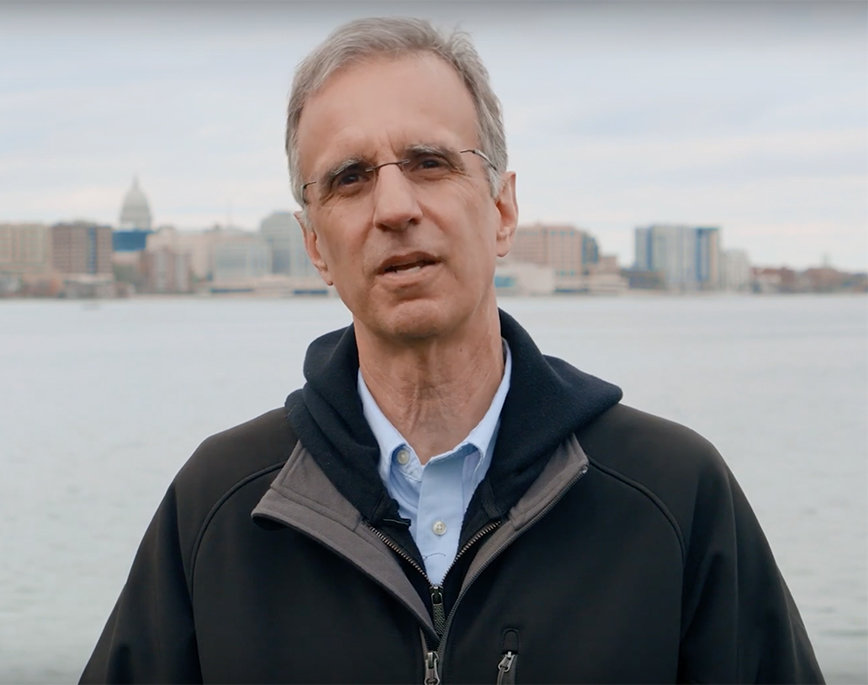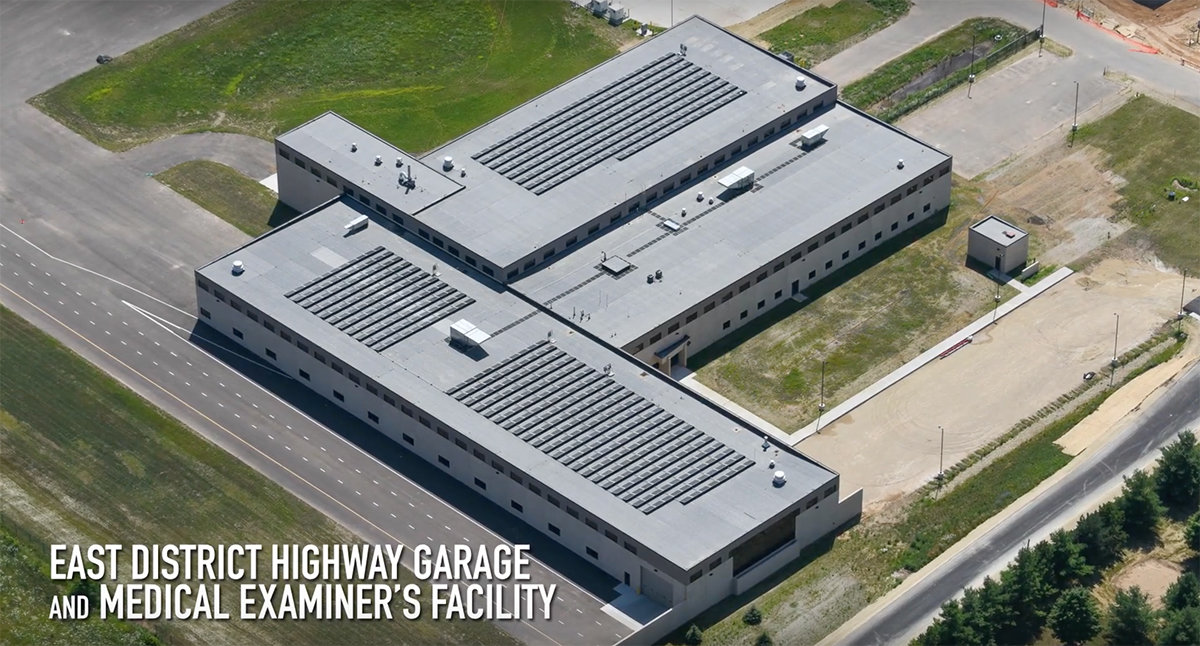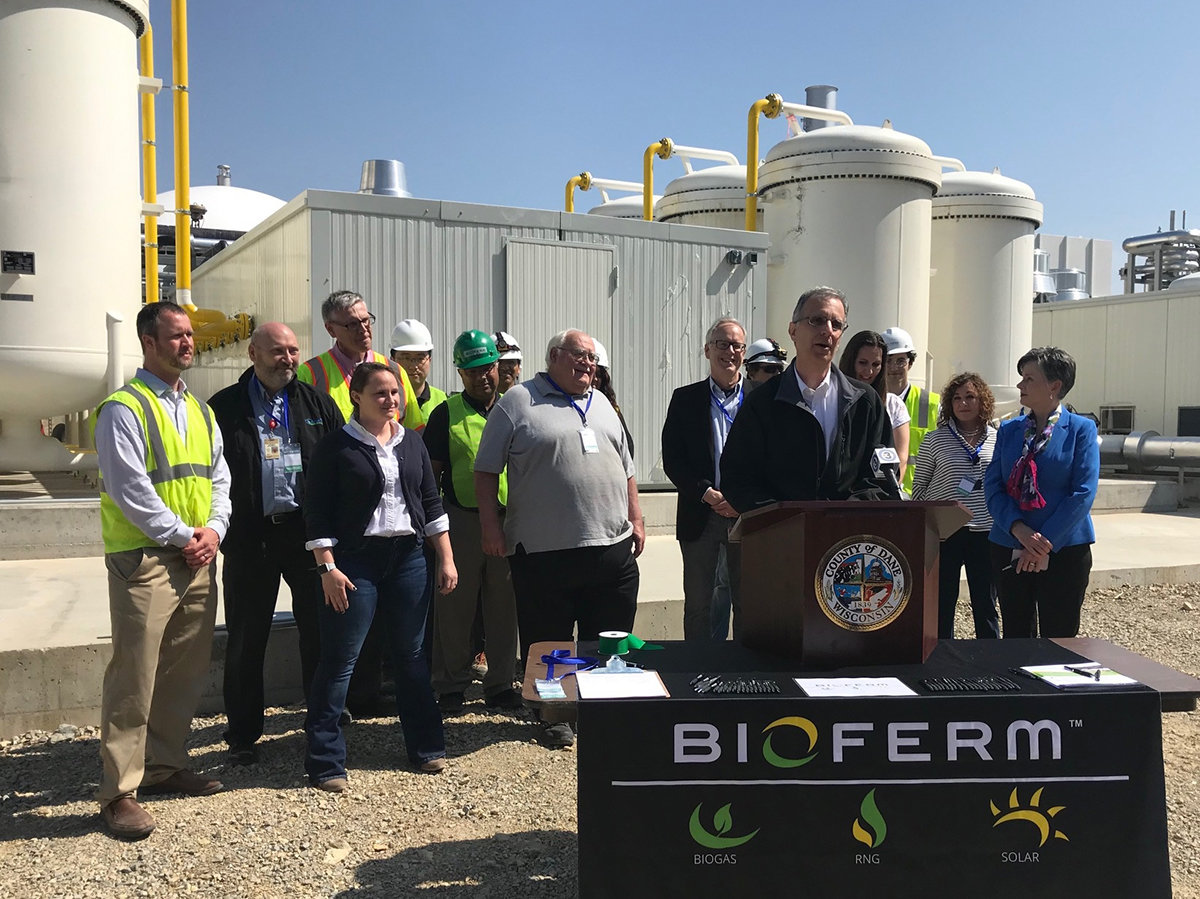Dane County’s collaborative efforts to address climate change and sustainability
Posted by Samantha Haas on Thursday, September 12th, 2019 at 11:51am.
Cheese curds aren’t the only byproduct of cows that we have an excess of in the Madison area. There are also phosphorus-rich turds. And unfortunately when it’s raining, some of that fertilizer runs off farm fields and into our groundwater.
“Over the last few decades, the phosphorus concentrations of the Yahara chain of lakes (Mendota, Monona, Waubesa, Kegonsa) have led to an increase in the frequency and extent of algae blooms, creating green, slimy lakes and beaches,” according to the Dane County Land and Water Resources Department.
But cows are hardly the only ones to blame for the Dairy State’s environmental woes. For that, we can take a look in the mirror and reflect on how we handle our own messes.

Even though 94% of Wisconsin households recycle and feel it is worthwhile, the state Department of Natural Resources reports, the average person in Wisconsin generates 4.7 pounds of trash each day and recycles 1.9 pounds of that trash per day. And according to the U.S. Energy Information Administration, only 9% of Wisconsin’s utility-scale net electricity generation came from renewable energy resources.
Despite the gloomy outlook on our planet’s changing climate -- such as lakes freezing weeks later than average and historical weather events like flooding a seemingly annual occurrence -- there are some bright developments happening at the local level that we can be proud of as we reduce our carbon footprint and energy costs.
 Steps forward include the creation of the Dane County Office of Energy and Climate Change (OECC) and Dane County Council on Climate Change (DC4) in 2017, as well as the Sustainability Leaders Collaborative in 2019. Leaders from over 20 municipalities in Dane County recently met to form four working groups focused on solar development, renewable fuel usage for municipal fleets, energy efficiency and sustainability for facilities, and green infrastructure to manage runoff from heavy rain events.
Steps forward include the creation of the Dane County Office of Energy and Climate Change (OECC) and Dane County Council on Climate Change (DC4) in 2017, as well as the Sustainability Leaders Collaborative in 2019. Leaders from over 20 municipalities in Dane County recently met to form four working groups focused on solar development, renewable fuel usage for municipal fleets, energy efficiency and sustainability for facilities, and green infrastructure to manage runoff from heavy rain events.
“In Dane County, we’re committed to a clean energy future. We’re addressing climate change right here at the local level,” County Executive Joe Parisi said in a video about the county’s latest sustainability and renewable energy projects.
“We’ve invested in efficiency, in solar power, and we’re investing in other projects with partners throughout the county to show that you can develop clean alternative fuels while at the same time doing the right thing by our taxpayers,” Parisi continued. “And our landfill is one of the most progressive in the nation. We’re capturing methane or fueling vehicles for generating renewable electricity.”
The 10-minute video provides a great overview and graphics of some of the ongoing county projects, including those we highlight from the linked press releases below.
Dane County is home to many of the largest solar arrays in the state and is investing in wind developments. The sun provides over 600 kilowatts of 100% emission free electricity at 16 sites, which include the new Dane County East District Highway Garage and Medical Examiner’s Facility, the Dane County Regional Airport (which will be the largest public sector project in the state generating 9 megawatts of power), the Dane County Jobs Center, Dane County Library Service, the Alliant Energy Center, and the Lyman F. Anderson Agriculture and Conservation Center. The new solar projects are projected to reduce carbon dioxide emissions by 777 tons, reducing direct energy costs by over $2.1 million over the next two decades.

Clean lakes and beaches
Dane County has been using environmental media filters called beach curtains to shield recreational areas from runoff pollutants and bacteria. In addition, any contamination that occurs inside of the swimming water will be cleaned using a 24/7 chemical-free on-site treatment system. “Clean Beach Corridors” include Lake Mendota County Park, Goodland County Park, Warner Beach. Additional systems will be installed over the next several years at Tenney Park Beach, Esther Park Beach, James Madison Park, and Vilas Park. And to reduce algae, another innovative initiative called “Suck the Muck” is permanently removing decades of phosphorous latent sediment from 33 miles of waterways feeding the lakes of Dane County, which will hopefully improve the natural reproduction and diversity of fish populations. Targeted areas include Dorn and Upper Dorn Creek, Token Creek, Lower and Upper Sixmile Creek, Yahara River, Door Creek and Nine Springs Creek.

Dane County has embarked upon an aggressive conversion of its county fleet of cars and trucks, away from fossil fuels, and toward cleaner burning vehicles that run on renewable compressed natural gas (RNG) that the county government produces. RNG has the lowest climate change emissions of any vehicle fuel being sold today.

Electricity-generating landfill
For more than two decades, Dane County has generated enough renewable electricity at its landfill to power 4,500 homes, which is fueled by the naturally occurring methane given off by the waste rather than just burning off their biogas as most landfills do. But in April 2019, the county opened a new $29 million dollar Landfill to RNG project -- the first of its kind in the nation -- which will benefit local economies and advance the county’s clean lakes and air efforts. The county’s landfill biogas facility is now able to turn trash and cow manure into renewable fuel and inject it into the interstate transmission pipeline so it can be bought and sold to power fleets of RNG vehicles locally and across the United States, and Kwik Trip has partnered with the county to be one of the primary dispensers. The new facility also has a biogas offloading station to allow other biogas producers, like manure digesters, to inject their gas into the pipeline. Digesters reduce greenhouse gas emissions by collecting methane that would otherwise be emitted into the atmosphere. The facility will displace 3 million gallons of fossil fuels in the first year of operation, with this number growing to 4 billion gallons per year in future years. Due to RNG having a lower carbon footprint, this is equivalent to taking 4,800 cars off the road. This is a CO2 emission reduction equal to over 24,000,000 pounds of coal burned. In addition to the facility’s environmental benefits, it is estimated that Dane County will generate enough revenue from the facility to payback its $28 million cost of the project in just a few years.

